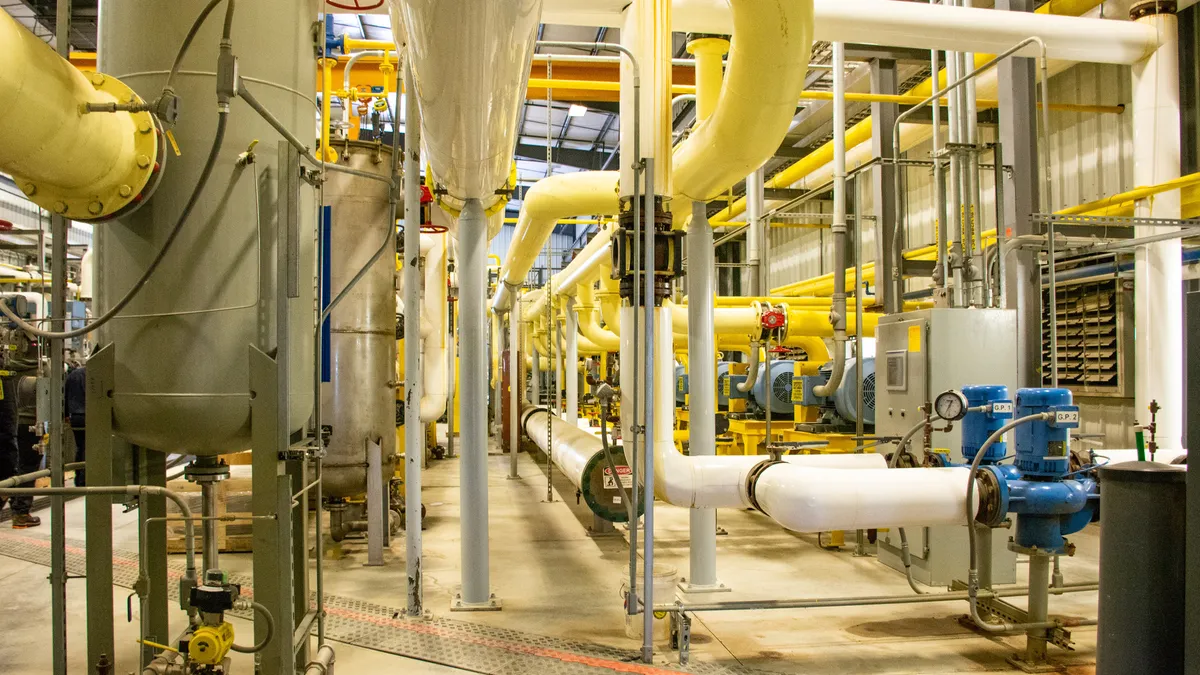Dive Brief:
- The U.S. Department of Energy on Wednesday published an industrial decarbonization road map, laying out a comprehensive strategy to reduce emissions associated with five sectors: chemical manufacturing, petroleum refining, iron and steel, cement production, and the food and beverage industry.
- Heavy industry is the source of about 30% of primary energy-related carbon dioxide emissions in the United States, the department says. Its approach will focus on energy efficiency improvements, electrification, the use of low-carbon fuels, and carbon capture utilization and storage, or CCUS.
- Alongside the new road map, DOE announced a $104 million funding opportunity for industrial decarbonization technologies. The American Council for an Energy-Efficient Economy called the road map a “landmark plan” to help companies address emissions at scale.
Dive Insight:
The United States has been investing in clean industry technologies for years, but the plan released yesterday “embodies a bolder approach,” according to ACEEE Industrial Program Director Edward Rightor, who is also co-chair of the team that developed the DOE report.
DOE’s new plan is “a more ambitious strategy, grounded in a cohesive approach incorporating partnership opportunities for industry to accelerate decarbonization,” Rightor said.
The road map will focus on five of the most CO2-intensive industries, which DOE says represent slightly more than half of energy-related CO2 emissions in the U.S. industrial sector and 15% of economywide total CO2 emissions.
The industrial sector is “critical to our economy and daily lives, yet it currently accounts for an enormous portion of greenhouse gas emissions, and is particularly difficult to decarbonize,” Energy Secretary Jennifer Granholm said in a statement.
The strategy and funding opportunity "couldn’t come at a better time,” White House National Climate Advisor Gina McCarthy said in a statement. The announcements build on funding in the Inflation Reduction Act and bipartisan infrastructure law, she said, and the initiatives will make investments “in our workforce while reducing pollution burdens on fenceline communities.”
The strategy leans on energy efficiency, the electrification of industrial processes, use of low-carbon fuels — including green hydrogen and biofuels — and CCUS, which DOE said will focus on “permanent geologic storage as well as developing processes to use captured CO2 to manufacture new materials.”
DOE’s funding opportunity will focus on:
- Decarbonizing the chemical sector through the use of advanced reactors and alternative production and process heating technologies.
- Reducing emissions in the iron and steel industries by decarbonizing ore-based or scrap-based iron and steelmaking operations.
- Finding new technologies that decarbonize process heating operations within the food and beverage sector.
- Developing innovative cement formulations and using low carbon fuels and carbon capture technologies in cement production.
- And identifying cross-sector decarbonization technologies focused on innovations in low-temperature waste heat to power, thermal energy storage and industrial heat pump technologies.
Concept papers for the $104 million funding opportunity are due to DOE by Oct. 12, and the deadline for full applications is Dec. 20, the agency said.
President Joe Biden has set a goal for the United States to reach a net-zero economy by 2050, with a particular focus on simultaneously addressing issues of environmental justice and energy equity.
The net-zero goal is “ambitious,” DOE noted in its road map, but it “is achievable and will provide important benefits for all Americans in terms of public health, economic growth, reduced conflict from climate-related disasters, and quality of life.”















